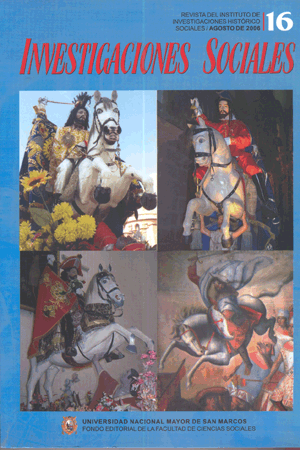Territorio, sociedad y poder en los Andes de Huamalíes-Huánuco La transición política de villa a ciudad en Llata, siglos XIX-XX
DOI:
https://doi.org/10.15381/is.v10i16.7027Keywords:
Social movements, authoritarianism, Indigenous Communities, Huanuco, region, Llata, Marañon.Abstract
This report contains a general vision of the social and political processes that were experienced by the communities, villages and cities located in the high Andean area of Huanuco. We examine, in particular, the microregion of Huamalíes near the Marañon river whose communities practice a seasonal agriculture on small plots associated with complex dynamic systems of migration toward surrounding mining areas and the coca rainforest of Monson. During the nineteenth and twentieth centuries two social groups emerge and consolidate with hegemonic power: Llata and La Union. The democratic and authoritarian options are expressed and diffused to the interior of the urban nuclei that evolve from villages to cities in their desire to be connected to the national oligarchical power and to conquer basic services in order to modernize their regional economies.Downloads
Published
Issue
Section
License
Copyright (c) 2006 Cesar Espinoza Claudio

This work is licensed under a Creative Commons Attribution-NonCommercial-ShareAlike 4.0 International License.
AUTHORS RETAIN THEIR RIGHTS:
a. Authors retain their trade mark rights and patent, and also on any process or procedure described in the article.
b. Authors retain their right to share, copy, distribute, perform and publicly communicate their article (eg, to place their article in an institutional repository or publish it in a book), with an acknowledgment of its initial publication in Investigaciones Sociales.
c. Authors retain theirs right to make a subsequent publication of their work, to use the article or any part thereof (eg a compilation of his papers, lecture notes, thesis, or a book), always indicating the source of publication (the originator of the work, journal, volume, number and date).













